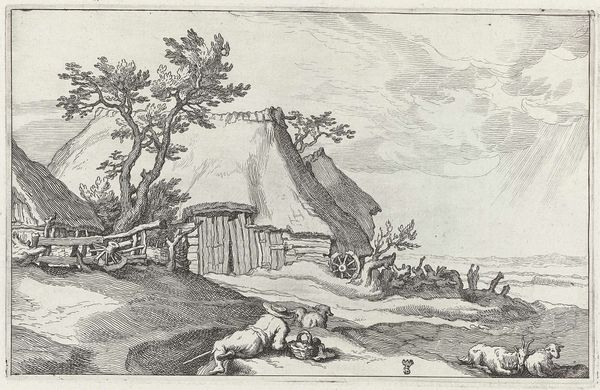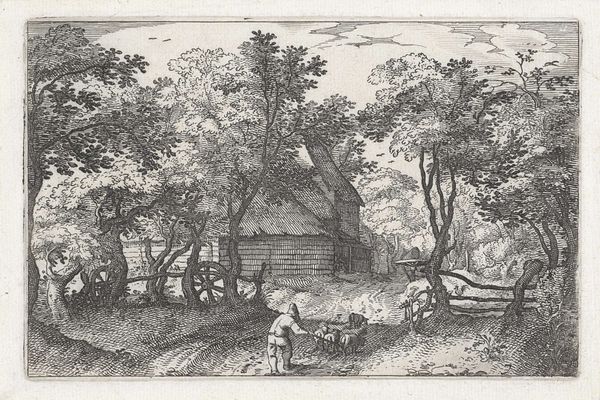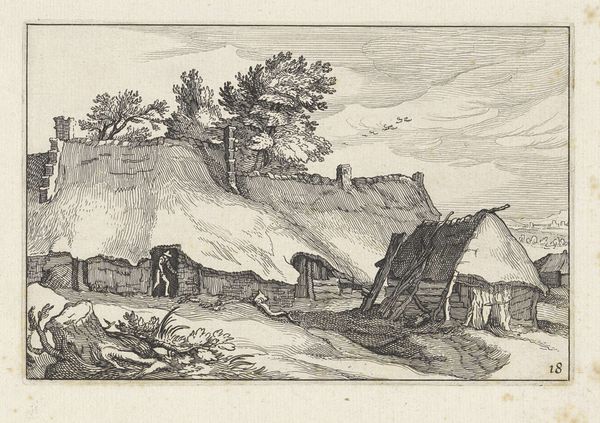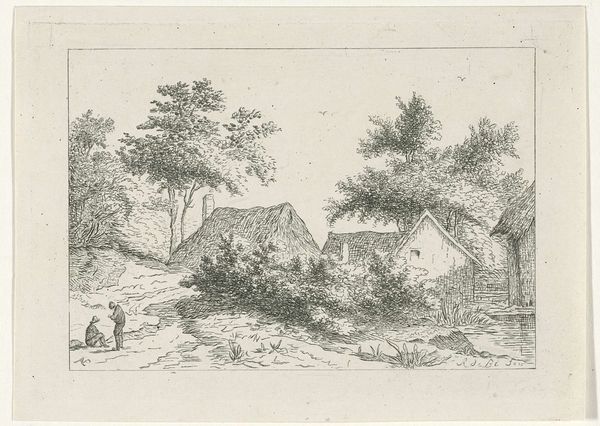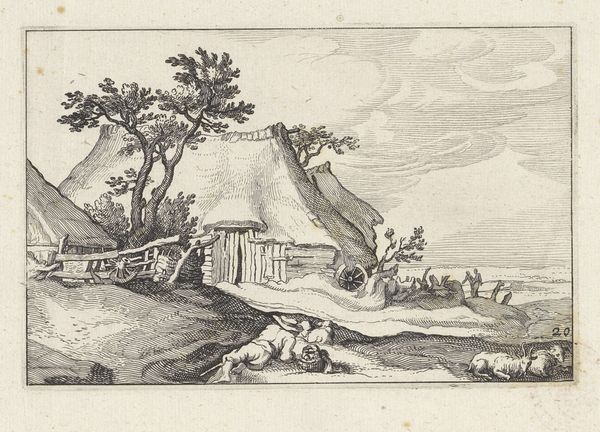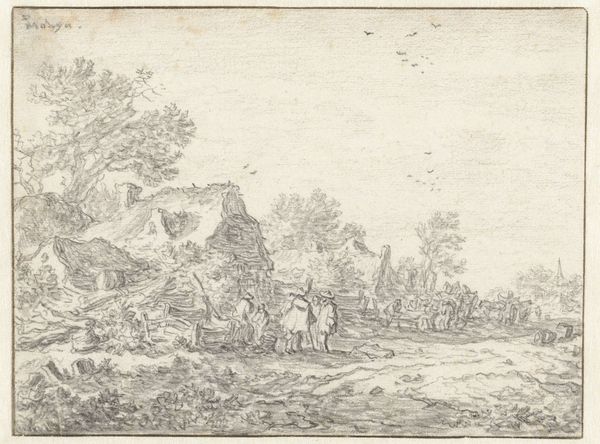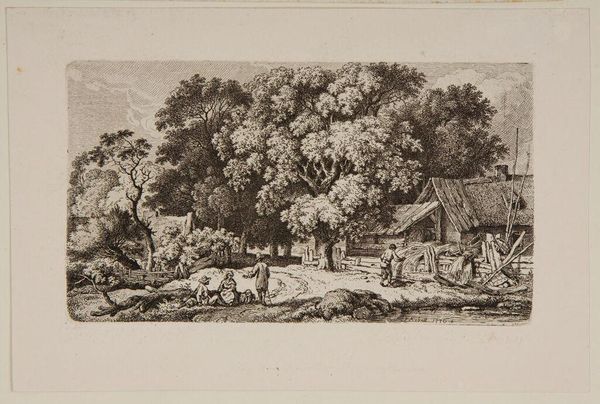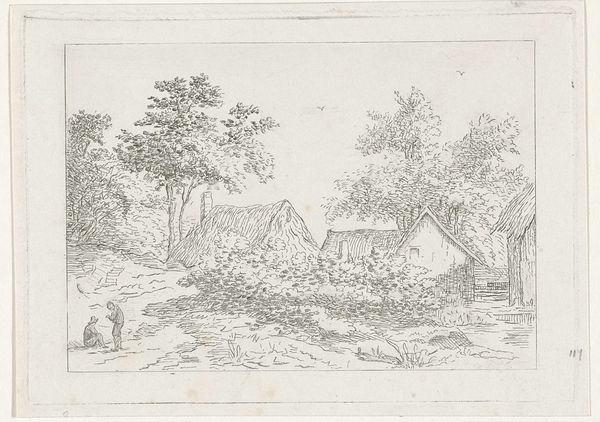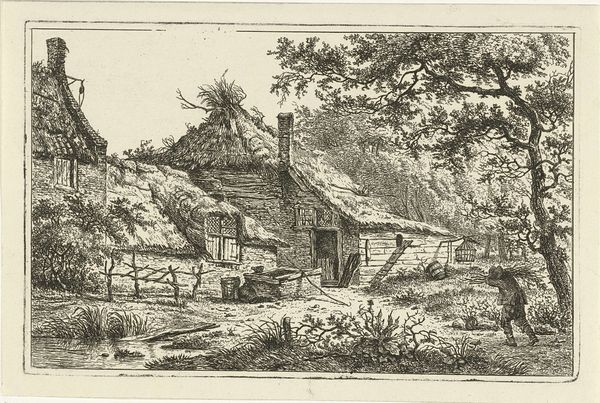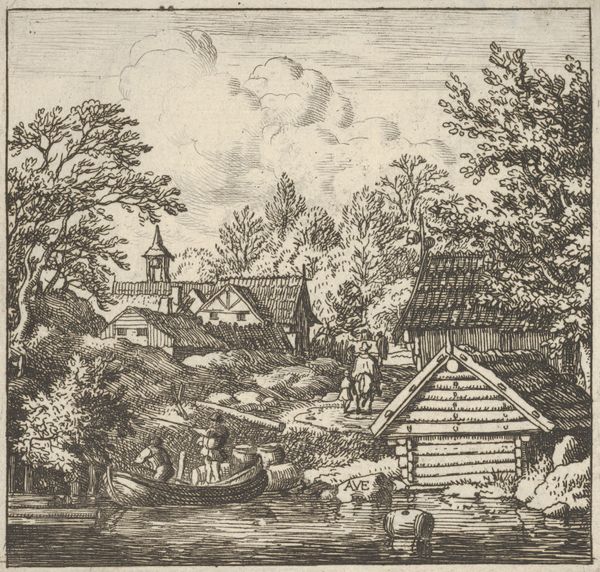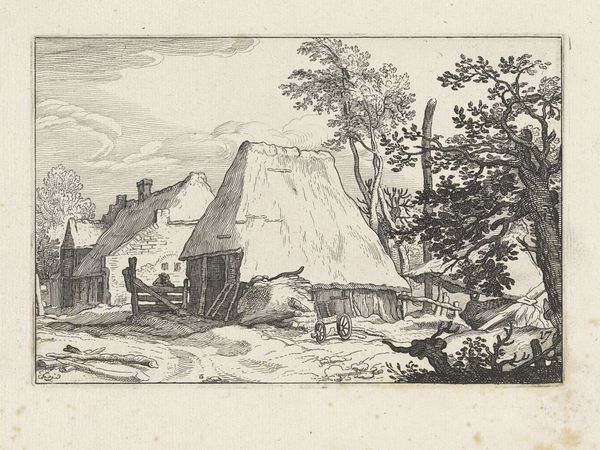
print, etching
# print
#
etching
#
old engraving style
#
landscape
#
genre-painting
#
realism
Dimensions: height 132 mm, width 192 mm
Copyright: Rijks Museum: Open Domain
Curator: Welcome. Today, we'll be looking at an etching by Hermanus Fock entitled "Farm with Woman, Child, and Dog," dating from around 1781 to 1822. It's currently held here at the Rijksmuseum. Editor: The first thing that strikes me is the overwhelming amount of texture. The tree on the left side in particular seems almost overburdened by intricate branching and foliage. It definitely sets the stage for the composition overall. Curator: Fock, like many artists of his time, was deeply engaged with the social and economic shifts affecting the Dutch countryside. The rise of a market economy and changes in agricultural practices led to depictions of rural life, sometimes idealized, sometimes critical, as a way to examine Dutch identity. Editor: I see it too in the small details of the farmhouse – how the etched lines so carefully render the aging wood, the haphazard thatch. It seems intent on capturing a humble structure worn down by time and nature. It has such verisimilitude. Curator: Right. Printmaking allowed for the widespread dissemination of images. Fock's piece, in this context, enters into a dialogue about labor, land, and family—what those things meant for different classes of people and how they were changing. The dog at the forefront, for instance, can be interpreted as a symbol of domestic stability, a family safe space that's challenged by bigger forces. Editor: That reading layers even greater emotional nuance onto what I initially perceived as a balanced composition. Now, the seemingly careful balance is infused with a sense of fragility, as if the entire scene could collapse under its own weight and entropy. Curator: Exactly. Artists of this era frequently tapped into societal anxieties. "Farm with Woman, Child, and Dog" offers insight into this moment. The seemingly benign genre painting gives way to something more incisive. Editor: What began as a somewhat picturesque image transforms into a surprisingly poignant representation. The meticulous rendering of form serves as vehicle of a broader historical narrative, I understand it much better now!
Comments
No comments
Be the first to comment and join the conversation on the ultimate creative platform.

